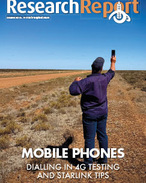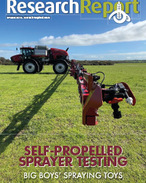This article is 4 years old. Images might not display.
The technique, or tool, could help with more accurate and efficient processing and breeding of quinoa to ensure the ancient superfood maximises palatability.
Quinoa seed has an outer coating that contains a compound, called saponin - derived from the Latin word for soap - which produces a foam when washed.
While the saponin acts as a natural deterrent to birds, pests and diseases, it has a bitter taste and can be harmful to humans if consumed in high quantities.
A simple foam test is commonly used to determine the approximate level of saponin on processed quinoa seed.
DPIRD research scientist Adel Yousif recognised an opportunity to modify a water droplet surface tension (WDST) technique used in the resources sector, to accurately quantify the saponin concentration and satisfy international quinoa specifications.
The DPIRD research was backed by co-investment from AgriFutures Australia, as part of its ‘Quinoa as a new crop in Australia' project.
The project focused on investigating where and how quinoa can be grown across Australia and resulted in the development of the new variety Kruso White by DPIRD.
Project lead, research scientist Harmohinder Dhammu, said the WDST provided an innovative, accurate and low-cost method to estimate the saponin content, which could generate wide-ranging benefits to the quinoa industry around the globe.
"The WDST measurement tool will ensure that post-processed seed is sufficiently low in saponin in order to create a more palatable product and reduce any potentially detrimental health effects," Dr Dhammu said.
"Secondly, this tool will assist plant breeders to screen and select lines for low seed saponin content."
The WDST method modified chemical engineering technology used to measure surfactants, a detergent-like substance like saponin, that when added to a liquid reduces its surface tension - increasing its spreading and wetting properties.
Three sources of commercial quinoa seed were tested during the research, including two Australian products and one from Bolivia.
The research is being shared with the global quinoa industry and was recently published in Food Chemistry, a scientific journal.























